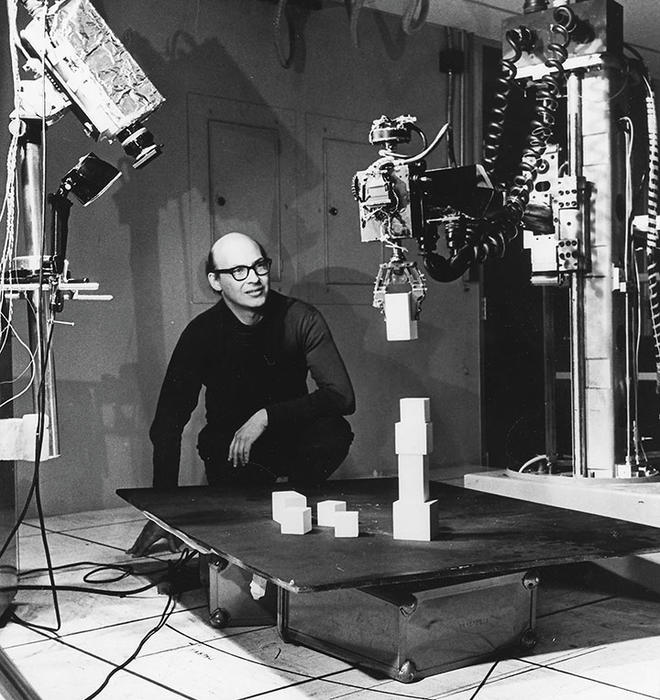
AUG. 9, 1927– JAN. 24, 2016
As a graduate student in mathematics at Princeton, Marvin Minsky *54 spent many hours in the department’s common room, where the likes of future Nobelist John F. Nash Jr. *50 would gather to play chess and hash out ideas.
Years later, when Minsky designed the offices of MIT’s Artificial Intelligence Laboratory, from which he helped launch the computer revolution, he ordered walls ripped out to open up a similar shared space for intellectual cross-pollination.
“He would sometimes just go there and lie down and soak in what other people were saying,” says Minsky’s daughter Margaret. “He was very explicit that he liked that about his Princeton experience.”
Minsky, who helped pioneer the field of artificial intelligence during more than 50 years at MIT, was fascinated by the way minds worked. In opposition to the millennia-old philosophical tradition that conceives of mind and body as irreducibly separate, he viewed human intelligence as the result of the brain’s numerous, distinct computational processes.
In his groundbreaking mid-1980s book The Society of Mind, he sought to show how “you can build a mind from many little parts, each mindless by itself.” Minsky imagined a future of computers capable of the common-sense reasoning tasks that human beings perform effortlessly.
“Once the computers got control, we might never get it back,” Minsky told Life magazine in 1970. “If we’re lucky, they might decide to keep us as pets.”
Minsky’s brilliance — in 1969, he received the Turing Award, the Nobel Prize of computer science — could be intimidating. “He was always ahead of you in a conversation and guessing what you were going to say,” says MIT professor Patrick Henry Winston, a Minsky student who followed him as head of the AI Lab. “And often what you were going to say wasn’t as good as what he’d predicted.”
But Minsky was also funny and playful, a lifelong tinkerer who kept a basement’s-worth of useful junk. At Princeton, he co-built one of the first electronic learning machines, using tubes, motors, and a surplus part from a B-24 bomber. A few years later, he invented the confocal scanning microscope, still widely used in biology and optics.
When his three children were young, he made a tiny kite out of gold leaf, entered it in a local festival, and won the prize for the smallest kite. That same year he hauled a parachute out of the basement and won the prize for the largest kite. “He always had some project,” Margaret Minsky says.
The intelligent machines Minsky envisioned still lie over the horizon. “The actual computer programs that emerged from MIT were typically things that, given the technology available at the time, could not really do what AI proponents saw in their mind’s eye,” says mathematician Martin Davis *50, who met Minsky while both were students at New York’s Bronx High School of Science. “He was more like Moses — allowed to look into the Promised Land but not actually to enter it.”
Freelance writer Deborah Yaffe’s most recent book is Among the Janeites: A Journey Through the World of Jane Austen Fandom.
VIDEO: Marvin Minsky *54
Courtesy TED






No responses yet